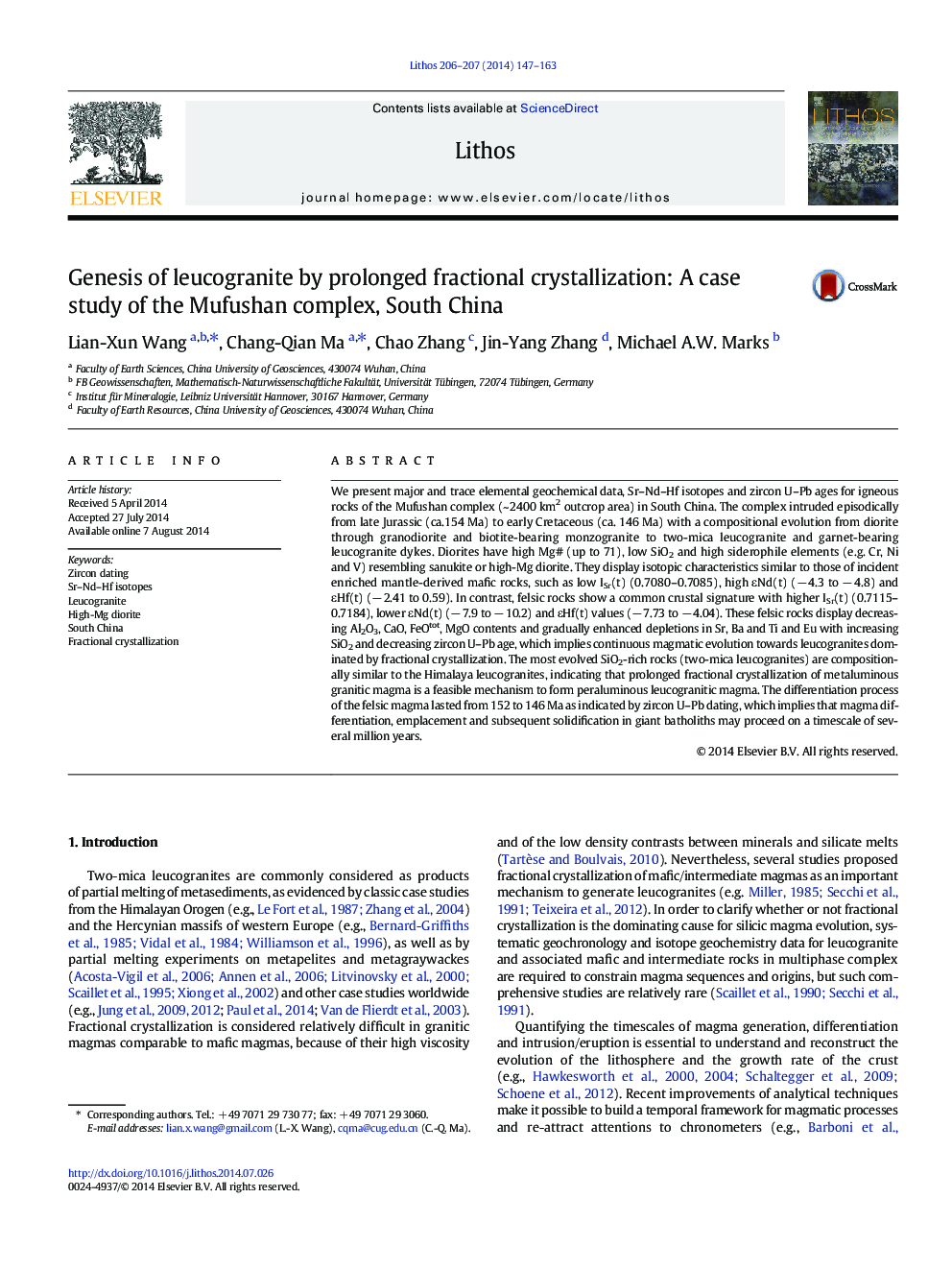| کد مقاله | کد نشریه | سال انتشار | مقاله انگلیسی | نسخه تمام متن |
|---|---|---|---|---|
| 4715944 | 1638672 | 2014 | 17 صفحه PDF | دانلود رایگان |
• Continuous-formation from diorite to two-mica leucogranite in Mufushan complex
• Highly evolved Mufushan leucogranites chemically similar to Himalaya leucogranites
• Differentiation from granodioritic to two-mica leucogranitic magmas lasts for 6 Ma.
• Fractional crystallization is a feasible mechanism to generate leucogranitic magma.
• The diorites are mantle-derived magma providing necessary heat for crustal melting.
We present major and trace elemental geochemical data, Sr–Nd–Hf isotopes and zircon U–Pb ages for igneous rocks of the Mufushan complex (~ 2400 km2 outcrop area) in South China. The complex intruded episodically from late Jurassic (ca.154 Ma) to early Cretaceous (ca. 146 Ma) with a compositional evolution from diorite through granodiorite and biotite-bearing monzogranite to two-mica leucogranite and garnet-bearing leucogranite dykes. Diorites have high Mg# (up to 71), low SiO2 and high siderophile elements (e.g. Cr, Ni and V) resembling sanukite or high-Mg diorite. They display isotopic characteristics similar to those of incident enriched mantle-derived mafic rocks, such as low ISr(t) (0.7080–0.7085), high εNd(t) (− 4.3 to − 4.8) and εHf(t) (− 2.41 to 0.59). In contrast, felsic rocks show a common crustal signature with higher ISr(t) (0.7115–0.7184), lower εNd(t) (− 7.9 to − 10.2) and εHf(t) values (− 7.73 to − 4.04). These felsic rocks display decreasing Al2O3, CaO, FeOtot, MgO contents and gradually enhanced depletions in Sr, Ba and Ti and Eu with increasing SiO2 and decreasing zircon U–Pb age, which implies continuous magmatic evolution towards leucogranites dominated by fractional crystallization. The most evolved SiO2-rich rocks (two-mica leucogranites) are compositionally similar to the Himalaya leucogranites, indicating that prolonged fractional crystallization of metaluminous granitic magma is a feasible mechanism to form peraluminous leucogranitic magma. The differentiation process of the felsic magma lasted from 152 to 146 Ma as indicated by zircon U–Pb dating, which implies that magma differentiation, emplacement and subsequent solidification in giant batholiths may proceed on a timescale of several million years.
Figure optionsDownload as PowerPoint slide
Journal: Lithos - Volumes 206–207, October 2014, Pages 147–163
